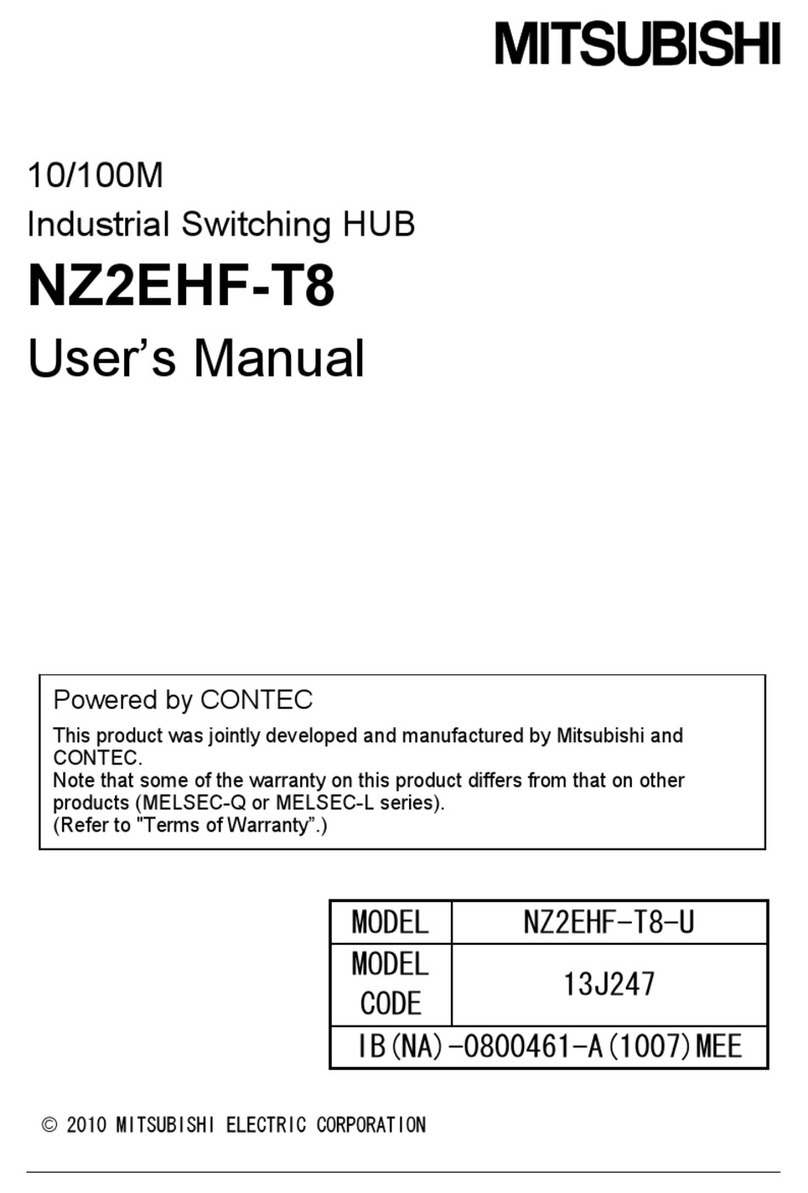- 1 -
This manual describes how to install the centralized controller and wiring. Before installing the controller, read the
1 Safety Precautions section carefully to ensure proper installation.
Safety symbols used in this manual
The following symbols are used in this manual to indicate the type and severity of potential consequences that may result when
given instructions are not followed exactly as stated.
Retain the Installation Manual and the Instruction Book for future reference. Make sure both the Installation Manual and the
Instruction Book are passed to any future air condition system users.
1 Safety Precautions
WARNING Indicates a risk of death or serious injury.
CAUTION Indicates a risk of injury or damage to the controller.
WARNING
CAUTION
The controller must be professionalling installed.
Improper installation by an unqualified person may result in
electric shock or fire.
Make sure the controller is securely mounted so that it
will not fall.
Only use specified cables. Securely connect each
cable so that the weight of the cable is not applied to
the connectors.
Loose or improper connections may result in heat
generation or fire.
Do not attempt to modify or repair the controller.
Modification or improper repair may result in electric shock
or fire.
Consult your dealer when repairs are necessary.
Securely install the controller according to the
installation manual.
Improper installation may result in electric shock or fire.
Electric work must be perform by authorized
personnel according to the local regulations and the
instructions detailed in the installation manual.
Inadequate circuit capacity or improper installation may
result in electric shock or fire.
Ask your dealer or an authorized technician to move
the controller.
Improper installation may result in electric shock or fire or
damage to the controller.
Do not install the controller where there is a risk of
flammable gas.
If the leaked gas accumulates around the controller, it may
ignite and cause an explosion.
Do not use the controller in an environment high in oil,
steam, or sulfuric gas.
These substances may have adverse effects on the
performance of the controller or damage its parts.
Do not install this controller in a place that has the
potential for steam or dew formation.
Steam or dew formation may cause an electric shock or a
unit malfunction.
Do not install this controller where an acid or alkaline
solution or special chemical spray is used frequently
to avoid electric shock or malfunction.
When installing the controller in a hospital or communication facility, take appropriate measures to reduce
electrical noise interference.
Inverter equipment, generators, high-frequency medical equipment, or radio communication equipment may interfere with
the normal operation of the controller; or the electrical noise from the controller may interfere with the medical practice or
cause image distortion and static.
To prevent over-heating and fire, wire so that the
weight of the cable will not strain the connectors.
Seal the wire lead-in port with putty to prevent the
entry of dew, water, and insects to avoid electric shock
or malfunction of the controller.
Do not wet the controller.
Water may damage the controller and cause an electric
shock.
Do not install this controller where the ambient
temperature exceeds 40°C (104°F) or drops below 0°C
(32°F).
To prevent the controller from being damaged and
malfunctioning, install it out of direct sunlight.
To reduce the risk of electric shock, install and wire the
unit with the power to the PAC-SC51KUA power supply
unit turned off.
Consult an authorized agency for the proper disposal
of the unit.
The unit contains mercury, which is harmful to the environment.
Use specified wires with the proper current carrying
capacity to prevent current leakage, over-heating, or
fire.
Do not touch the PCB (Printed Circuit Board) with your
hand or a tool.
Keep the PCB dust-free to prevent fire or malfunction.
To avoid the risk of electric shock or damage to the
controller, do not touch the touch panel or USB
storage device connector with wet hands.
To avoid the risk of electric shock or damage to the
controller, do not press the touch panel with sharp
objects.
To avoid causing damage or fire, do not apply an AC
voltage or a voltage higher than 32VDC to the M-NET
or the Power (24VDC) terminal blocks on the
controller.
Use a security device such as a VPN router when
connecting the AG-150A to the Internet to prevent
unauthorized access.
00gb_WT05368X04_7.book Page 1 Tuesday, April 21, 2009 2:11 PM





























